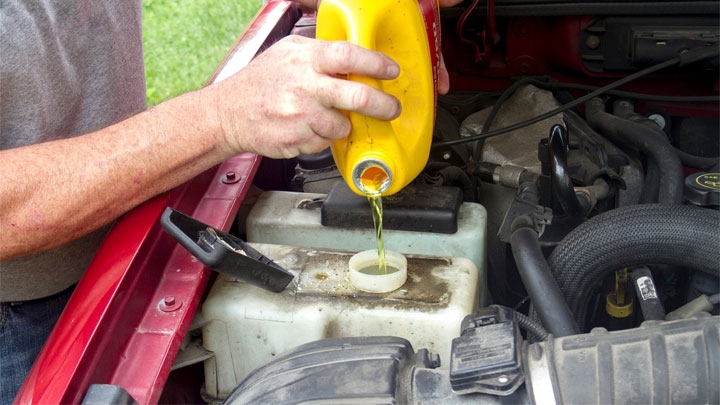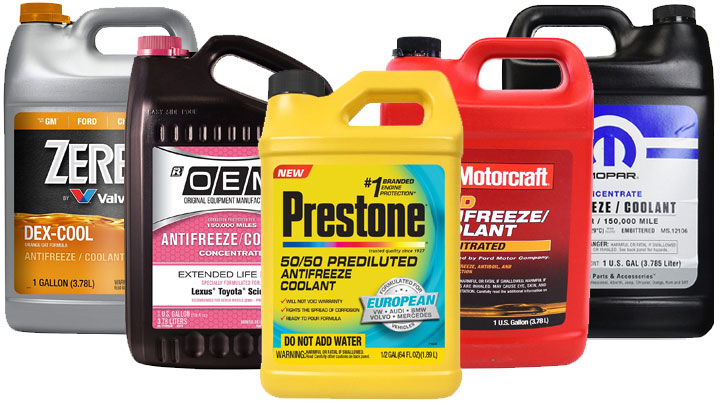Last Updated on June 2, 2022
Overfilling your cooling system is not a good idea. In this article we will discuss what can happen if you overfill your coolant, how to remove excess coolant, and how to correctly top off your coolant.
But first let’s look under the hood and examine the two different types of coolant tanks that might be found in your car and where you would add coolant to your system if it is low.
Expansion Tank vs Overflow Tank
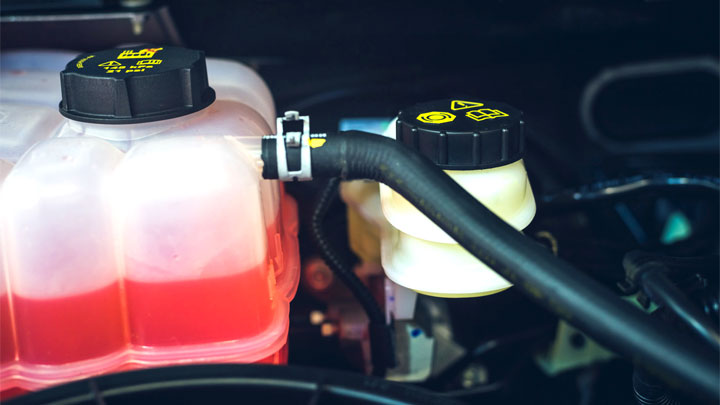
For most cars today, antifreeze will always be added to either an expansion tank or to an overflow (coolant recovery) tank located near the engine. What’s the difference?
Expansion Tank
An expansion tank is a pressurized part of your car’s closed cooling system. It connects directly to the radiator and is exposed to the high system pressure that your cooling system develops when the engine is hot.
This tank will have a metal pressure-rated cap just like the cap often seen on a radiator that you might recall from years back. Never remove this cap or attempt to add coolant when the engine is hot. Remember that a hot system is pressurized and removing this cap could allow scalding antifreeze to spray everywhere.
Overflow Tank
An overflow tank is an unpressurized storage reservoir for engine coolant. It is also connected to the radiator and will have a simple cap that is vented to the atmosphere. Sometimes this type of cap will have a visible vent hole on top.
Coolant Expansion Process
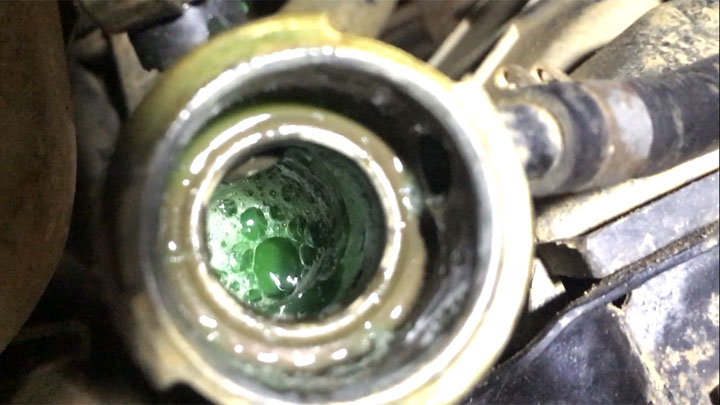
Whenever you start your car, the engine will gradually heat up, and as it does, the antifreeze will expand in volume. Each type of tank provides ample storage space for that expanding coolant to be retained while the engine is running. When the engine is shut off and cools, the coolant will contract and be drawn back into the radiator.
Decades back, automobile engine cooling systems did not include this extra storage capability. From a freshly filled radiator, expanding coolant simply overflowed from the filler neck drain port and drained onto the road below.
Once this cycle occurred a time or two, an empty air space in the top of the radiator developed that would subsequently accommodate coolant expansion. Environmental considerations influenced the development of the closed system expansion and overflow tanks furnished in automobiles today.
On some cars today, the filler provision on either type of tank will include a drain hose to convey any inadvertent overflow of coolant down below the car.
Many cars, however, either do not include this long drain hose feature or may include only a very short hose. For most cars, inadvertent drainage goes right into the engine compartment. More on this in a moment.
See Also: Can You Put Water in a Radiator in an Emergency?
Checking Coolant Level (Hot or Cold Engine?)
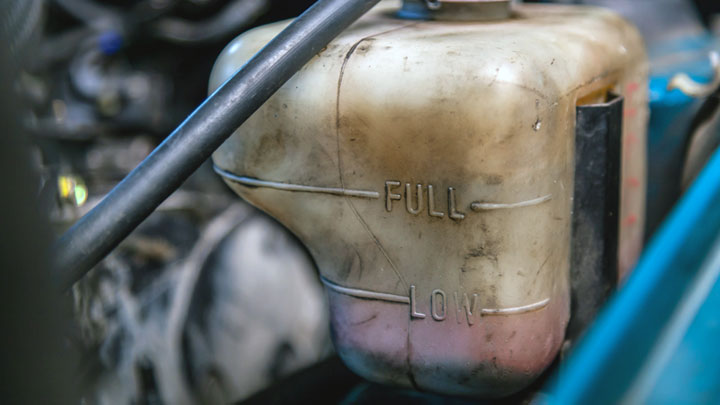
Both types of tanks are typically made of a translucent plastic material. Whichever type is in your car, it will be marked with two coolant levels. On most vehicles, there will be a maximum level for cold coolant and a maximum level for hot coolant.
Always top up the system when the engine is cold and fill the tank to the “Cold” level line but go no higher. The airspace above that fill line will be needed to receive the expanding fluid as the engine gets hot.
The full line (marked “Hot”) on the side of this tank is there to enable checking coolant level under hot engine conditions. If coolant level is ever observed above this line, the system is overfilled.
This overfilled condition must be corrected when the engine cools by removing some coolant from the tank. See “How to Remove Excess Coolant” below.
Should you be uncertain about where to add coolant to your car’s cooling system, always check your Owner’s Manual.
Related: Losing Antifreeze But No Visible Leaks?
Is Too Much Coolant Bad?
Yes, absolutely. An overfilled coolant tank will overflow into the engine compartment. Period. The three possible problems this can cause are discussed below.
See Also: Is Too Much Transmission Fluid Bad?
What Can Happen if You Overfill Your Coolant?
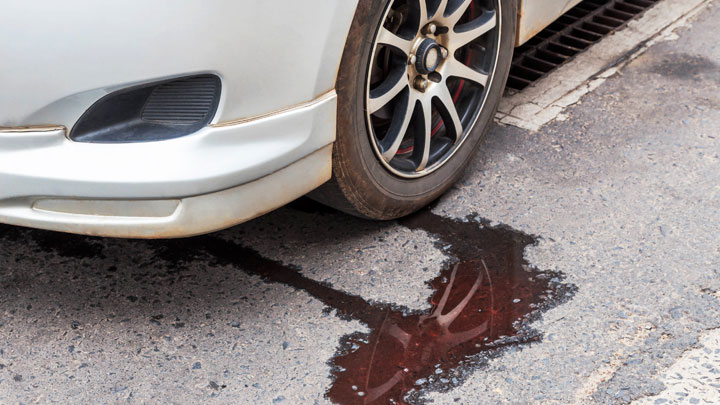
You are checking the antifreeze level in the tank on your car. And the tank appears to need more antifreeze. That is, it’s not full right to the edge of the filler neck. So you mistakenly decide to add coolant right to the very top. This can cause problems.
Remember, we said the tank is marked with full lines for cold or hot engine conditions. Never fill above the “Hot” line. And when the engine is cold, never fill up to the “Hot” line. An overfilled tank will overflow as soon as your engine heats up. And here are some of the problems this will cause.
#1 – Mess in the Engine Compartment
As mentioned earlier, many cars have no drain hose to carry that overflowing fluid down below the engine. So the coolant will either dribble or spray out into the engine compartment.
And if you are driving, the turbulent airflow beneath the hood can distribute the sticky antifreeze all over the inside the engine compartment. At the least, this will be an annoying mess to have to clean up later.
On top of that, when coolant makes contact with the extremely hot metal components under the hood, you will notice a strong burning coolant smell inside and outside the vehicle.
#2 – Possible Damage to Electronics
The underhood area is filled with electronic components. Antifreeze blowing around inside the engine compartment could easily damage such electronics.
Devices like the alternator, engine sensors and controllers, ignition coils and spark plugs, etc., could be sprayed and the engine could conceivably stop running leaving you parked alongside the highway. Correcting the moisture damage to electronic components could be costly as well.
#3 – Danger to Animals
There are many types of coolant. The majority of them are toxic. Any drainage below your car while in your own or another family’s driveway could leave puddles that might attract pets.
Consuming this antifreeze off the driveway could result in the death of domestic animals and wild animals as well. Be kind to animals… never overfill your cooling system.
How to Remove Excess Coolant

So you made the mistake of filling the coolant tank right to the top. What now?
Check your auto parts store or hardware store (take a different car). Such stores generally sell small hand-powered suction pumps with lengths of plastic tubing that will work well for sucking extra fluid from the coolant tank.
Mityvac is a popular product but the Pennzoil Multi-Use Pump is a good, cheap option as well.
A plastic turkey baster available at most grocery or large discount stores can be used as well. Don’t reuse this baster in the kitchen on Thanksgiving.
Save the coolant in a sturdy plastic container with a snug lid. Label this container, “50-50 antifreeze” for future use. Store it well out of the reach of children. Comply with local environmental laws should you decide to discard it.
Is It Safe to Temporarily Drive With Too Much Coolant?
Doing so poses a risk of causing the coolant overflow problems discussed above. While this is not by itself a safety risk, the three problems discussed above could happen.
For these reasons, unless you have an emergency situation, avoid operation of your vehicle until the coolant level has been corrected .

